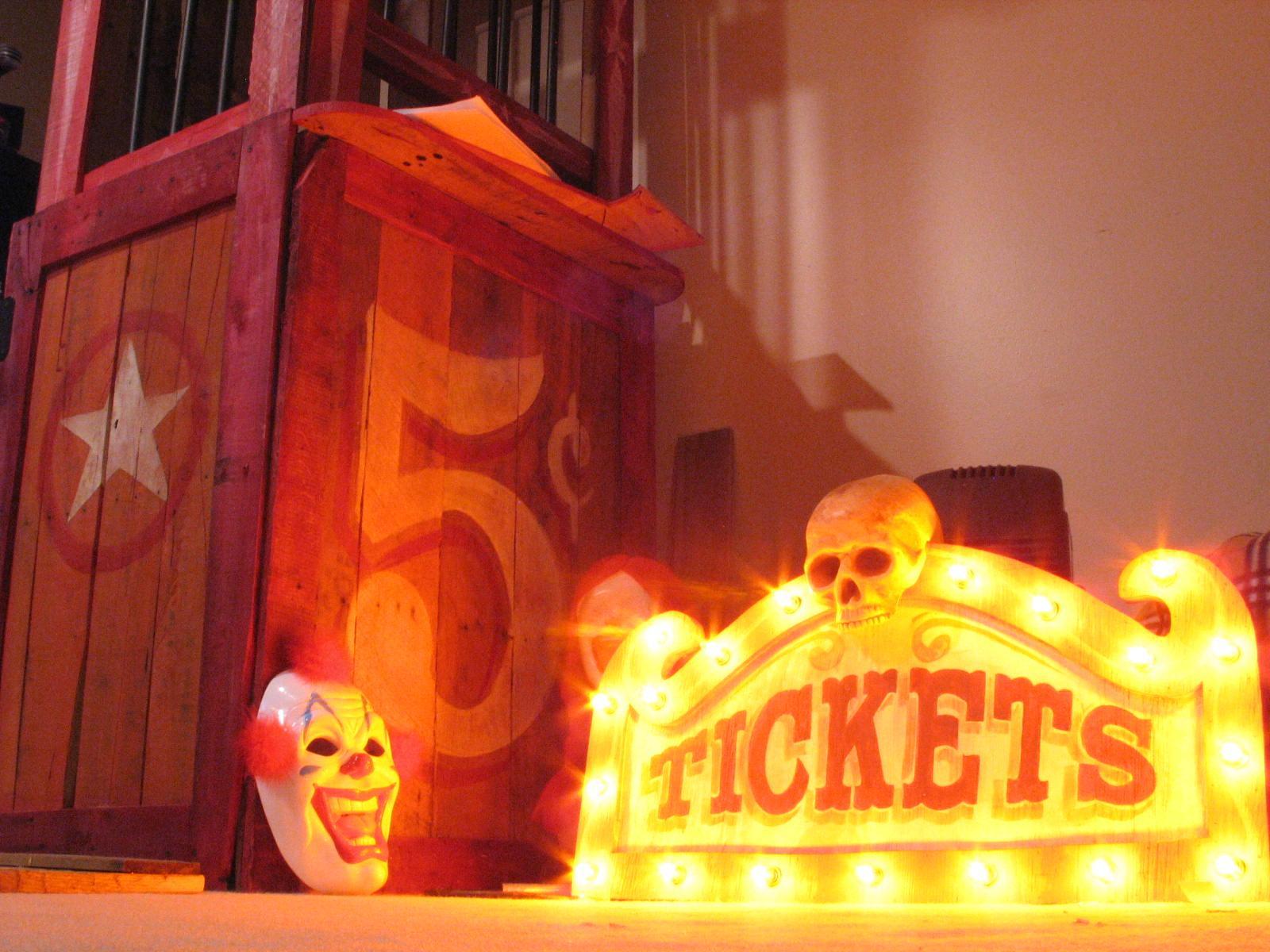At the last minute this Halloween we decided to decorate in a creepy carnival theme with the goal of not spending too much money on decorations to save more for candy.
One of the many ideas we had was to build a creepy ticket booth to welcome visitors to our house for Trick or Treat.
This ‘back of a napkin’ idea evolved into a recycling mission as we scoured the industrial park for old, weather-beaten pallets and dug through flea market bins for door hinges.
Everything about this project was very freestyle and design-as-you-build but I’ll do my best to nail down specifics so you can recreate this ticket booth for yourself.
There are a LOT of steps here because I like to be as thorough as possible. I’ll keep it as concise as I can.
Also important to note, some pictures will differ slightly from my instructions. This is by no means a ‘to-the-inch’ guide. If I made 5 of these I guarantee they’d be a little different every time. Feel free to wing it a little.



